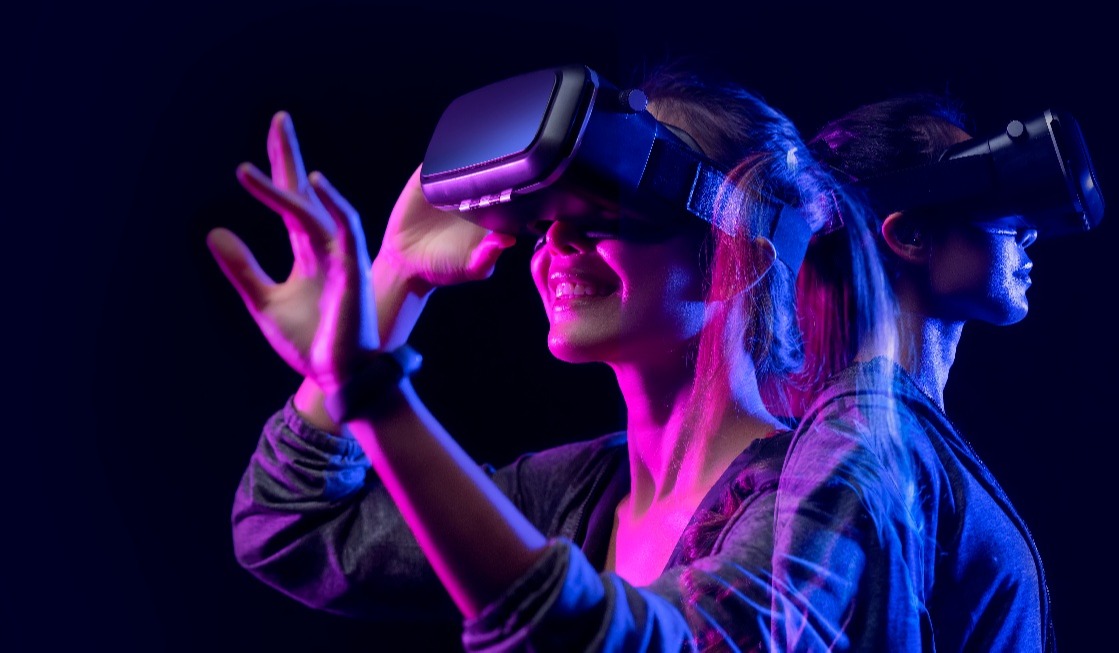Enhanced virtual and augmented experiences
Facebook made multiple news headlines at the end of last year when it announced it was officially changing its name to ‘Meta’. Meta’s focus is on bringing the ‘metaverse’ to life – a hybrid of today’s online social experiences. It will enable the sharing of immersive augmented and virtual reality (AR/VR) experiences, bringing together users in a whole new online world.
Whilst the concept of the Metaverse is still rather tricky to grasp – even Head of Instagram Adam Mosseri isn’t quite sure what the future holds for it – this shift highlights that online audiences are becoming increasingly hungry for VR and AR experiences.
What you should do about it: Organisations should consider how they can use VR and AR to improve their customer experiences, both online and at events. For example, for an online setting this could be introducing a 360° video or virtual tour to a website or landing page. Read about how we did this for the University of Lancaster here. Or for a physical event, it could be introducing a virtual reality experience to engage your audience. Read about how we did this for Network Rail here.
The online user has power over their privacy
Apple’s iOS14 update came into effect last year, giving consumers ultimate control over their data and what ad content they receive on their devices. At its core, it essentially gives users the choice of whether they want to opt in or out of tracking within mobile apps like Facebook.
Brands and governing bodies like Google and Apple share the aim of placing the power of privacy back into the hands of the users, allowing them to choose how and when they want to release their data. And whilst this is great for the consumer, it creates some difficulties for organisations to continue delivering relevant ads to their target audience.
What should you do about it: Organisations should consider the impact of increased privacy restrictions online and create alternative strategies for targeting their audiences effectively. We’ve pulled together a guide you can follow for navigating the new iOS update here.
Influencer marketing will shift from trend to tactic
In a recent survey, HubSpot asked global marketing professionals which trends they planned to invest in for 2022. The top result? Influencer marketing.
Working with influencers can be incredibly lucrative for B2B and B2C organisations alike as influencers have an already captive audience who are both engaged in and ‘influenced’ by the information they receive. So provided the partnership is a suitable fit, influencer collaborations can create fantastic brand awareness and loyalty.
What should you do about it: Organisations should seek to invest in influencer partnerships, however only where suitable. We’ve put together some helpful guidance on getting influencer marketing right here. You can also check out how we helped Network Rail connect with a younger audience using influencer marketing here.
Video content should be kept short and sweet
Taking the second spot in HubSpot’s global marketing professionals survey after influencer marketing was short-form video content. The survey revealed that an estimated 89% of global marketers plan to continue investing in short form video content into 2022.
Short-form video appeals greatly to the fast-paced attention spans of online audiences across a wide range of demographics. This is why platforms like TikTok, Snapchat and Reels have experienced such rapid growth in popularity over recent years.
What should you do about it: Organisations across B2B and B2C should consider using short-form video. Both B2B and B2C marketers should utilise short-form video to engage audiences. We’ve created a lot of captivating short-form video content for our clients over the years, which you can see here.
Are you looking for ways to enhance your online experiences for your audiences this year? Get in touch with us. We’d love to see how we can work together.
Originally published:
January 7, 2022
Updated:
August 14, 2023





